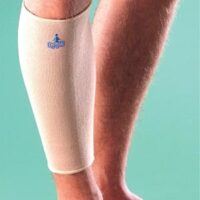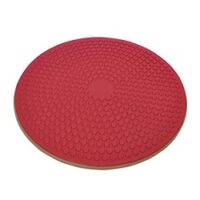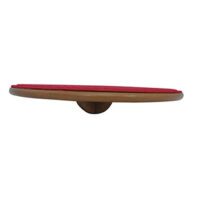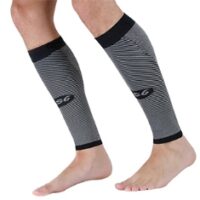Posterior Shin Splints
Article by John Miller

Posterior Shin Splints: Understanding, Diagnosis, and Treatment
Why Do Posterior Shin Splints Occur?
Posterior shin splints arise when the tibialis posterior muscle weakens or fatigues, particularly where it attaches to the inner rear of your shinbone. This muscle plays a crucial role in controlling the arch of your foot during weight-bearing activities. When it’s compromised, the arch collapses, leading to increased stress on your shinbone. The result? Pain along the inside rear of your shin.
This condition, also known as medial tibial stress syndrome (MTSS), commonly affects runners and others involved in sports that involve repetitive foot striking. However, it’s essential to differentiate it from anterior shin splints, which affect a different area of the shin.
Read more: Shin Pain

How Do Posterior Shin Splints Develop?
Understanding the root causes of posterior shin splints is crucial for effective treatment. Overstraining the muscles attached to the shinbone is often to blame. Factors contributing to this condition include:
- Training Errors: Increasing training intensity too quickly or running on hard or angled surfaces.
- Biomechanical Issues: Overpronation or oversupination of the feet, decreased ankle flexibility, poor muscle control, and weak core stability.
- Equipment: Wearing inappropriate footwear can exacerbate the problem.
These factors combined can lead to inflammation and stress on the shinbone, affecting the muscles, periosteum (the bone’s outer layer), and even the bone itself.
Read more: Shin Splints
Who is Affected by Posterior Shin Splints?
Athletes, especially runners, are most commonly affected by posterior shin splints. The condition can also impact individuals who rapidly increase their physical activity without proper conditioning.
Read more: Running Injuries
What Are the Symptoms?
Posterior shin splints cause a dull, aching pain along the inside-rear edge of your shinbone. The pain may worsen during exercise or even persist afterwards. If left untreated, the condition can progress to more severe stages, eventually leading to stress fractures.
Read more: Tibial Stress Fractures
How Are Posterior Shin Splints Diagnosed?
Diagnosis typically involves a thorough physical examination by your physiotherapist, who will assess the pain location and nature. In some cases, additional diagnostic tests like X-rays, bone scans, or MRIs may be needed to rule out other conditions.
Read more: Physiotherapy Assessments
What is the Solution? Treatment Options for Posterior Shin Splints
Treating posterior shin splints effectively requires a multi-phase approach:
- Early Injury Protection: Rest, ice, and anti-inflammatory measures are crucial. Supportive taping may also help.
- Regaining Range of Motion: Techniques like massage, stretches, and specific exercises prevent poorly formed scar tissue.
- Normalising Foot Biomechanics: A thorough assessment of your foot biomechanics may lead to recommendations for orthotics or other supportive measures.
- Restoring Muscle Strength: Strengthening exercises targeting key muscle groups are essential to prevent recurrence.
- Modified Training Programs: Your physiotherapist will guide you through a progressive training regime, helping you return to your sport safely.
Read more: Sports Injury Rehabilitation
New Research on Posterior Shin Splints
Recent studies highlight the importance of tailored rehabilitation programs in preventing recurrence. Management of medial tibial stress syndrome primarily involves conservative approaches such as rest and modifying activities to reduce repetitive, load-bearing exercises. While there is no fixed duration for rest, recovery time varies between individuals. Additional therapies like iontophoresis, phonophoresis, ice massage, ultrasound, periosteal pecking, and shockwave therapy have shown some benefits, albeit with low-quality evidence. Prevention strategies include using prefabricated orthotics, as shown in studies with naval recruits. For cases that do not respond well to initial management, optimising calcium and vitamin D levels, along with gait retraining, may aid in recovery and prevent further injury progression. McClure CJ, Oh R (2024)
What to Do Next?
Don’t let posterior shin splints keep you on the sidelines. Seeking advice from a qualified physiotherapist is crucial for a proper diagnosis and treatment plan tailored to your needs. Contact your local clinic to get started on the path to recovery.
Read more: Book an Appointment
Rochedale - Call 38410277
Book Online: RochedaleSalisbury - Call 32751044
Book Online: SalisburySandgate - Call 32691122
Book Online: SandgatePosterior Shin Splints FAQs
1. What causes posterior shin splints? Posterior shin splints are caused by overuse of the tibialis posterior muscle, poor foot biomechanics, and training errors. These factors place stress on the shinbone, leading to pain and inflammation.
2. How are posterior shin splints diagnosed? Physiotherapists diagnose posterior shin splints through a physical examination, assessing pain location, and possibly using imaging tests like X-rays or MRIs.
3. Can you continue running with posterior shin splints? Continuing to run with posterior shin splints can worsen the condition. It’s important to consult with a physiotherapist for a modified training plan.
4. What is the best treatment for posterior shin splints? Effective treatment includes rest, ice, proper footwear, strengthening exercises, and possibly orthotics. Physiotherapists can provide a tailored treatment plan.
5. How long does it take for posterior shin splints to heal? Healing time varies but generally takes several weeks to months, depending on the severity and adherence to the treatment plan.
6. Are posterior shin splints the same as stress fractures? While related, posterior shin splints and stress fractures are different conditions. Posterior shin splints can lead to stress fractures if left untreated.
Related Articles
- Shin Pain
Discover the common causes and treatments for shin pain, including posterior shin splints. - Shin Splints
Learn more about the differences between posterior and anterior shin splints. - Anterior Shin Splints
Understand the symptoms and treatments for anterior shin splints, often confused with posterior shin splints. - Tibial Stress Fractures
Find out how posterior shin splints can progress to stress fractures and what to do. - Running Injuries
A comprehensive guide to the most common injuries runners face, including shin splints. - Foot Biomechanics
Explore the role of foot biomechanics in preventing and treating shin splints. - Sports Injury Rehabilitation
Get back to your sport safely with a personalised rehabilitation plan. - Physiotherapy Assessments
Learn what to expect during a physiotherapy assessment for shin pain. - Sports Taping
Discover how kinesio taping can support recovery from shin splints. - Orthotics
Find out if orthotics could help prevent the recurrence of shin splints. - Shin Splints vs. Stress Fractures: How to Tell the Difference
Explore the key differences between these two conditions and how to treat each. - Biomechanics of Running: Preventing Shin Splints
Learn how proper running form and biomechanics can prevent shin splints. - Strengthening Exercises for Posterior Shin Splints
Find out which exercises are most effective in treating and preventing posterior shin splints.




















































